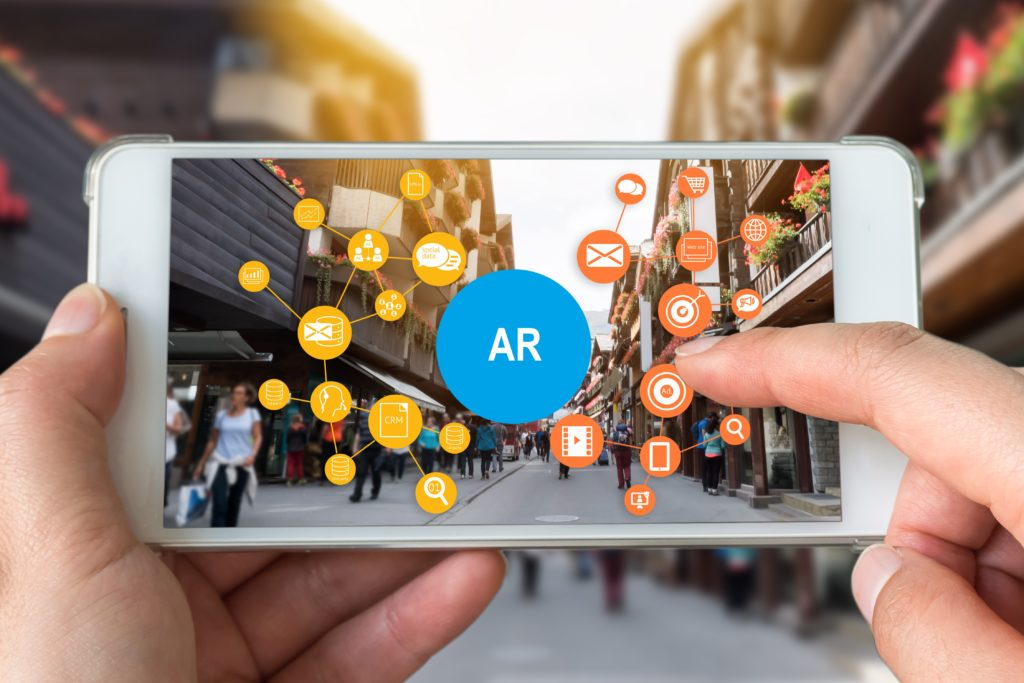Timeline Tales
Exploring the stories that shape our world, one timeline at a time.
Augmented Reality: The New Frontier for Everyday Adventures
Discover how augmented reality is transforming everyday adventures into immersive experiences. Unleash the future of fun today!
Exploring Augmented Reality: How It Transforms Your Daily Life
Augmented Reality (AR) is revolutionizing the way we interact with our environment, enhancing our daily lives in remarkable ways. By overlaying digital information onto the real world, AR provides a seamless blend of the virtual and physical, creating a richer experience. For instance, apps like Google Lens allow users to identify objects, translate text, and even offer real-time information about their surroundings. This technology has impactful applications in various fields, from education to healthcare, helping us learn, explore, and understand the world like never before.
In particular, AR is transforming everyday tasks through its integration into mobile devices and smart glasses. Consider how navigation apps utilize AR to provide direction overlays on real streets, guiding you effortlessly to your destination. Moreover, in the realm of shopping, AR enables customers to visualize products in their own homes before making a purchase decision. This not only enhances user experience but also significantly reduces the likelihood of buyer's remorse. As more businesses and developers embrace this innovative technology, the potential for augmented reality to further enrich daily life continues to grow.

The Impact of Augmented Reality on Travel and Exploration
Augmented Reality (AR) has revolutionized the way travelers experience new destinations, providing an immersive way to explore and interact with the world around them. With AR apps, tourists can overlay digital information onto their physical surroundings, enhancing their understanding of historical sites, cultural landmarks, and natural wonders. For instance, when visiting ancient ruins, travelers can use AR to visualize how the site appeared in its glory days, offering a richer context and educational experience. This seamless blend of technology and real-world exploration not only makes travel more engaging but also caters to the growing demand for interactive and personalized experiences.
Furthermore, the integration of AR in travel is paving the way for enhanced navigation and planning. Travelers can utilize AR-enabled maps to identify nearby attractions, restaurants, and activities with just a glance. This technology simplifies the process of discovering local gems and hidden treasures, ensuring that travelers get the most out of their adventures. As more travel brands and platforms adopt Augmented Reality tools, it is clear that this innovative technology will continue to shape the future of exploration, making it more accessible, informative, and enjoyable for globetrotters everywhere.
What Are the Best Augmented Reality Apps for Everyday Adventures?
Augmented Reality (AR) apps have revolutionized the way we experience our everyday adventures, merging the digital realm with the physical world. Whether you're exploring a new city or enhancing your outdoor activities, these innovative applications can make your experiences more immersive and enjoyable. Here are some of the best augmented reality apps to elevate your daily adventures:
- Pokémon GO - This iconic game remains a favorite, encouraging you to explore your surroundings while catching virtual creatures.
- Google Lens - A powerful tool that allows you to identify objects, translate text, and even shop, all using the camera on your phone.
- WallaMe - Create and discover hidden messages around your city, turning every visit into a treasure hunt.
These augmented reality apps not only enhance fun but also provide valuable information about the world around you. As you embark on new journeys, consider integrating these digital tools into your explorations for an enriched experience. Whether capturing a moment with friends or learning something new about your environment, the possibilities are endless:
"Augmented reality brings the virtual into our daily lives, transforming mundane experiences into extraordinary openings for adventure."